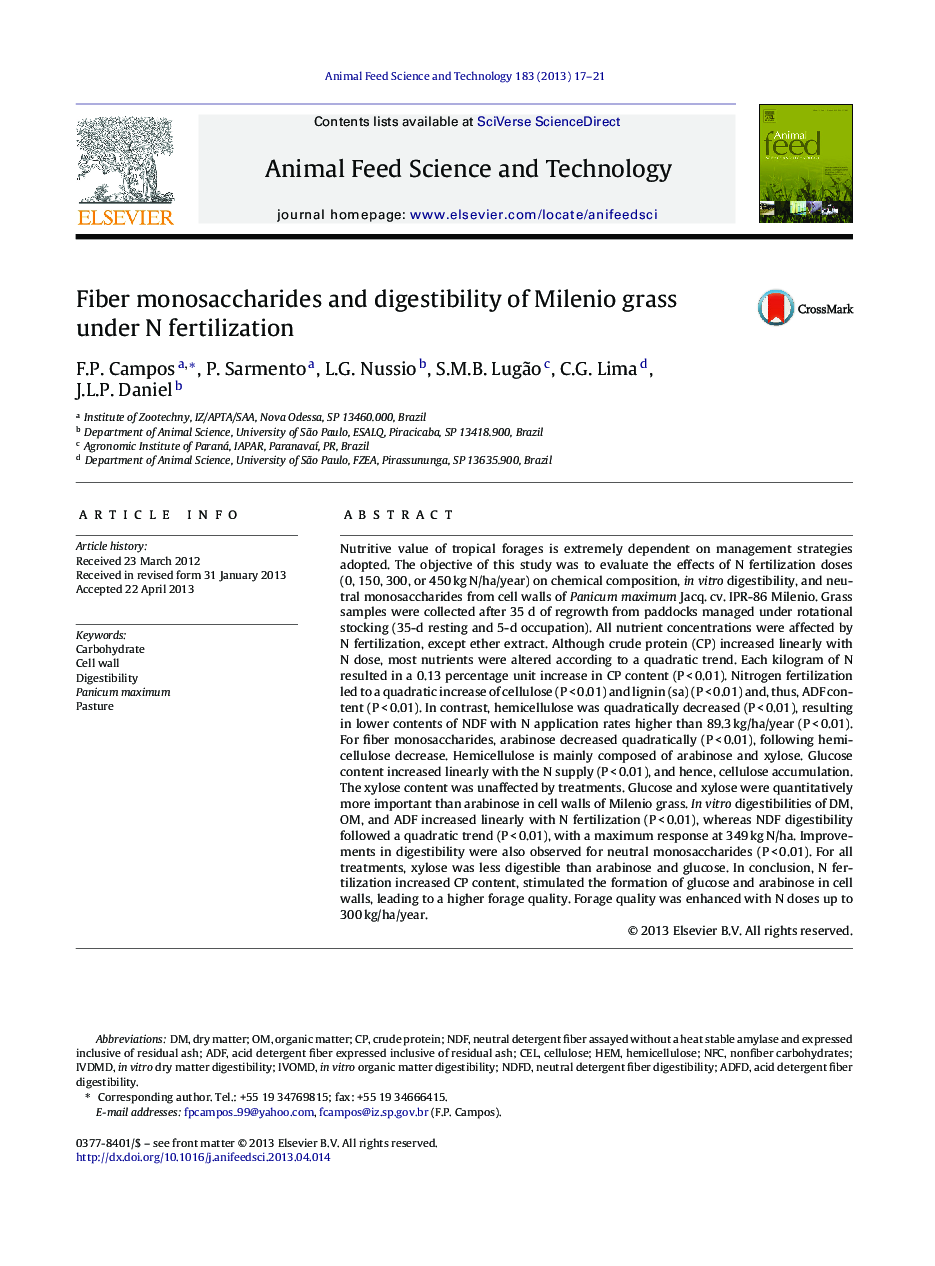| Article ID | Journal | Published Year | Pages | File Type |
|---|---|---|---|---|
| 8491846 | Animal Feed Science and Technology | 2013 | 5 Pages |
Abstract
Nutritive value of tropical forages is extremely dependent on management strategies adopted. The objective of this study was to evaluate the effects of N fertilization doses (0, 150, 300, or 450 kg N/ha/year) on chemical composition, in vitro digestibility, and neutral monosaccharides from cell walls of Panicum maximum Jacq. cv. IPR-86 Milenio. Grass samples were collected after 35 d of regrowth from paddocks managed under rotational stocking (35-d resting and 5-d occupation). All nutrient concentrations were affected by N fertilization, except ether extract. Although crude protein (CP) increased linearly with N dose, most nutrients were altered according to a quadratic trend. Each kilogram of N resulted in a 0.13 percentage unit increase in CP content (P < 0.01). Nitrogen fertilization led to a quadratic increase of cellulose (P < 0.01) and lignin (sa) (P < 0.01) and, thus, ADF content (P < 0.01). In contrast, hemicellulose was quadratically decreased (P < 0.01), resulting in lower contents of NDF with N application rates higher than 89.3 kg/ha/year (P < 0.01). For fiber monosaccharides, arabinose decreased quadratically (P < 0.01), following hemicellulose decrease. Hemicellulose is mainly composed of arabinose and xylose. Glucose content increased linearly with the N supply (P < 0.01), and hence, cellulose accumulation. The xylose content was unaffected by treatments. Glucose and xylose were quantitatively more important than arabinose in cell walls of Milenio grass. In vitro digestibilities of DM, OM, and ADF increased linearly with N fertilization (P < 0.01), whereas NDF digestibility followed a quadratic trend (P < 0.01), with a maximum response at 349 kg N/ha. Improvements in digestibility were also observed for neutral monosaccharides (P < 0.01). For all treatments, xylose was less digestible than arabinose and glucose. In conclusion, N fertilization increased CP content, stimulated the formation of glucose and arabinose in cell walls, leading to a higher forage quality. Forage quality was enhanced with N doses up to 300 kg/ha/year.
Keywords
NFCNDFdADFdIVDMDIVOMDNDFCelADFacid detergent fiber expressed inclusive of residual ashhemCell wallCelluloseDigestibilityorganic matterdry matterPastureneutral detergent fiber digestibilityIn vitro organic matter digestibilityIn vitro dry matter digestibilityhemicellulosePanicum maximumcrude proteinCarbohydratenonfiber carbohydrates
Related Topics
Life Sciences
Agricultural and Biological Sciences
Animal Science and Zoology
Authors
F.P. Campos, P. Sarmento, L.G. Nussio, S.M.B. Lugão, C.G. Lima, J.L.P. Daniel,
